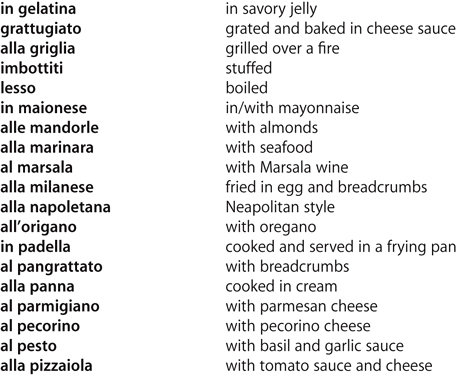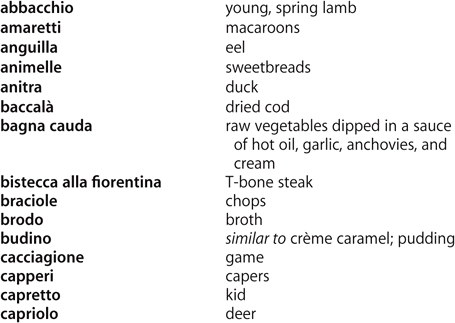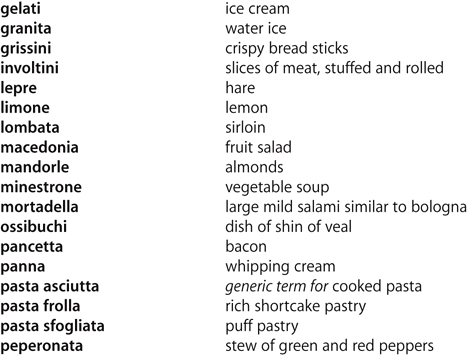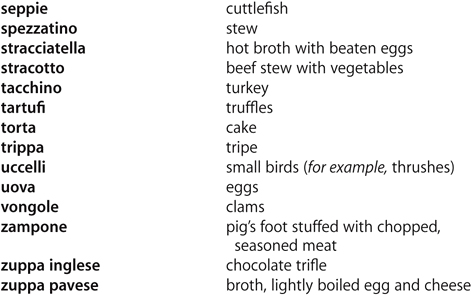
• Here are the places to ask for (see p. 10).

• By law, the price list of drinks (Listino prezzi) must be displayed somewhere in the bar.
• There is waiter service in some cafés, but you can drink at the bar or counter, which is cheaper. In the latter case, you first pay at the cash register (cassa), then take the receipt (scontrino) to the bar and give your order.
• Service is normally included in the bill (servizio compreso); if not, you should tip 10% to 15% of the bill.
• Bars and cafés serve both alcoholic and nonalcoholic drinks.
• There are no licensing hours, and children are allowed in.
• Italians drink a range of aperitifs (aperitivi) and digestives (digestivi). Their names vary from region to region. Most of the aperitifs are types of vermouth—red or white, sweet or dry—made by companies such as Campari, Punt e Mes, and Martini. The digestives may be made from almonds, fruit, or herbs and are often thick and syrupy.
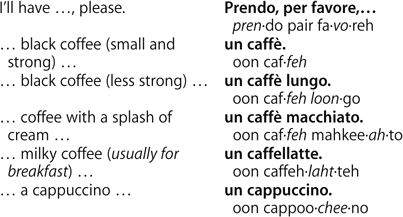
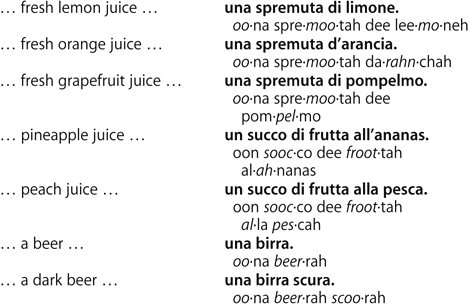
Other essential expressions are the following.
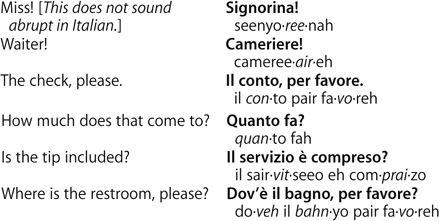
• Look for cafés or bars with the following signs.

• In some regions, mobile vans sell hot snacks.
• In bars, if you want to eat your snack at the counter, you first pay at the cash register, then hand the receipt to the waiter behind the bar.
• For cakes, see p. 48.
For ice cream, see p. 49.
For picnic food, see p. 54.
For ordering a drink, see p. 66.
• Small sandwiches called tramezzini are popular snacks and are made with a variety of fillings. Point to the one(s) you want.
• If olives, anchovies, potato chips, and nuts are available in bars, their price is normally included in the price of the drinks.
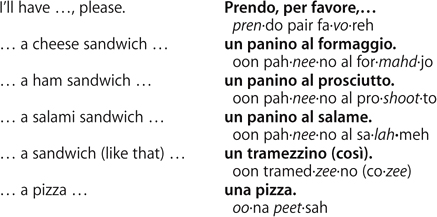
Here are some other snacks you may want to try.
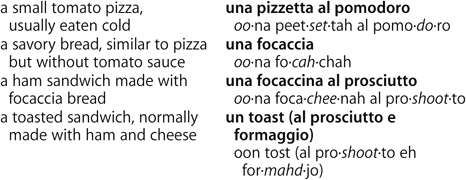
For other essential expressions, see “Ordering a Drink,” p. 66.
• The place to ask for is un ristorante (see p. 11).
• You can eat at any of the following places.

• Menus are always displayed outside larger restaurants; this is the only way to judge if a place suits you before entering.
• Some smaller restaurants do not have a printed or posted menu, and you must ask the waiter what is available.
• Self-service restaurants are rare.
• Service (15% to 20%) is always included in the bill, but an extra tip is usually welcome.
• Restaurants are legally required to give receipts, and you should insist on this.
• In southern Italy, the afternoon break is longer and dinner is eaten later in the evening than in the north.
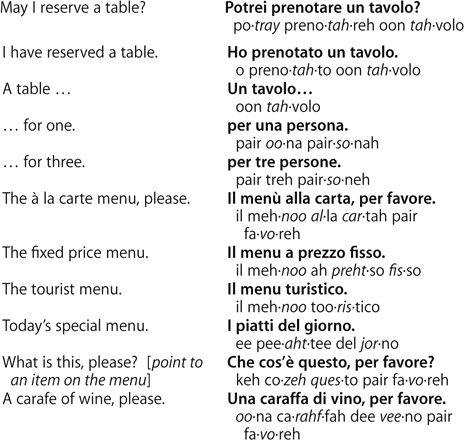
Here are some key words for meal courses, as seen on many menus.
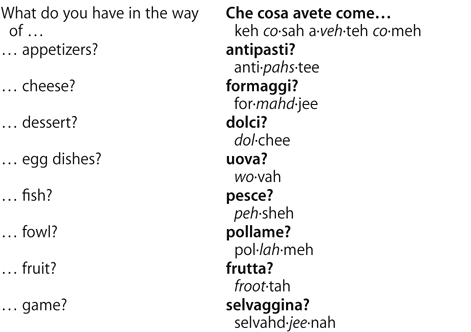
Pasta is part of the minestre course. See p. 77.
• The main ingredients of most dishes are given on the following pages.

Together with the following list of cooking and menu terms, the ingredient and pasta lists should help you decode a menu.
• Dishes vary considerably from region to region in Italy: a dish with the same name, for example,gnocchi alla romana (dumplings Roman style), might be prepared differently in Rome and Milan—or even in two restaurants in the same city. Also, the same dish might appear on menus all over Italy with a different name in each region. If in doubt, ask the waiter.
• These cooking and menu terms are given for recognition only; for this reason, no pronunciation guide is given.

